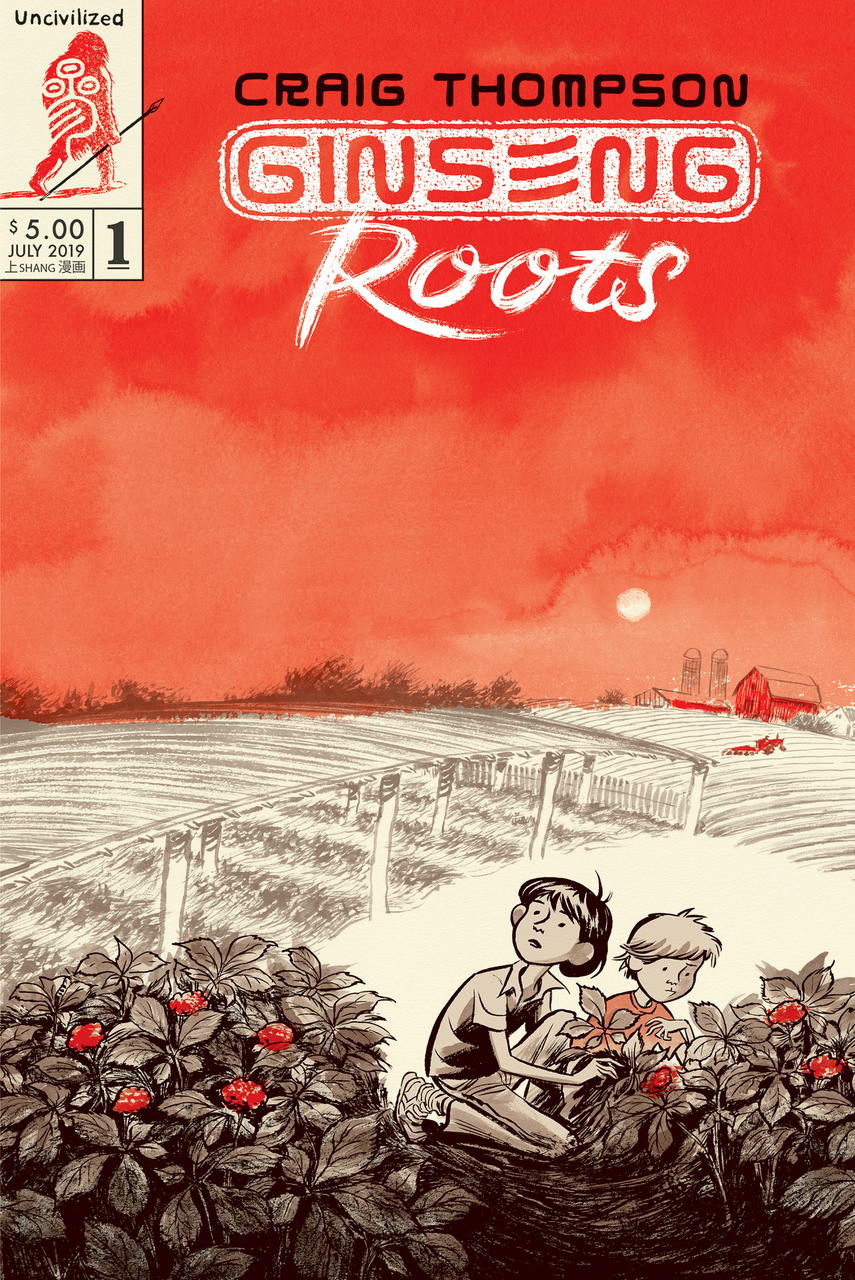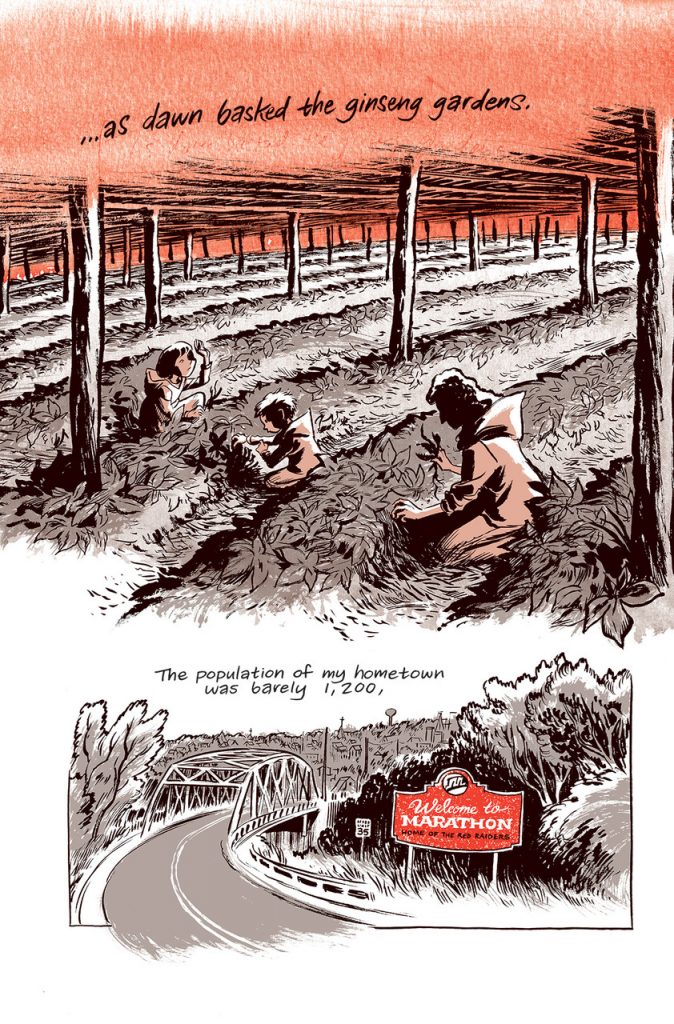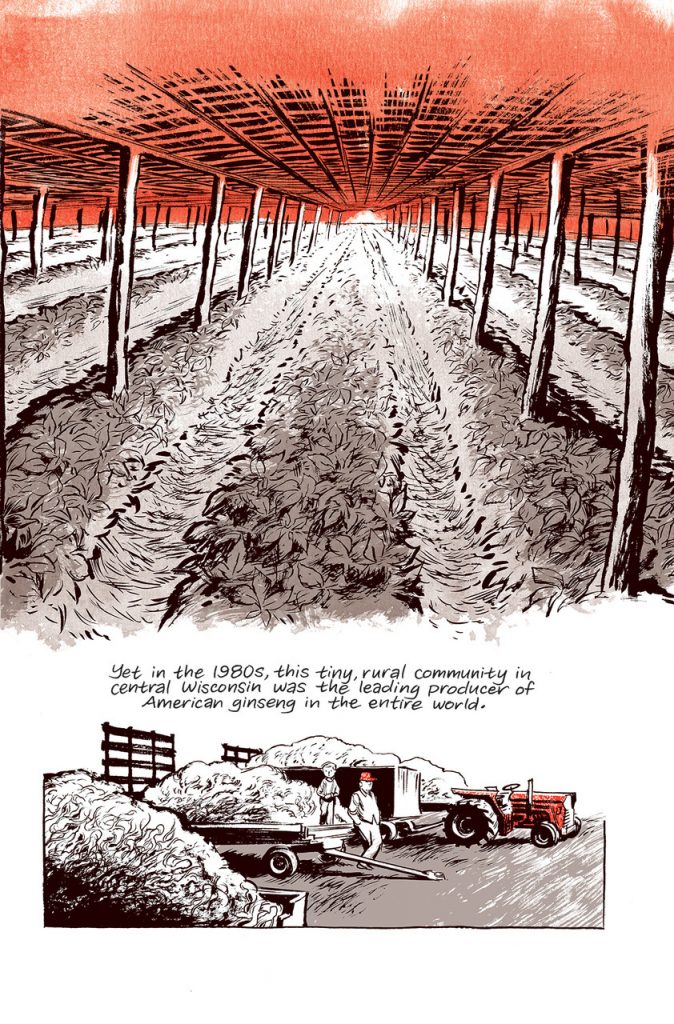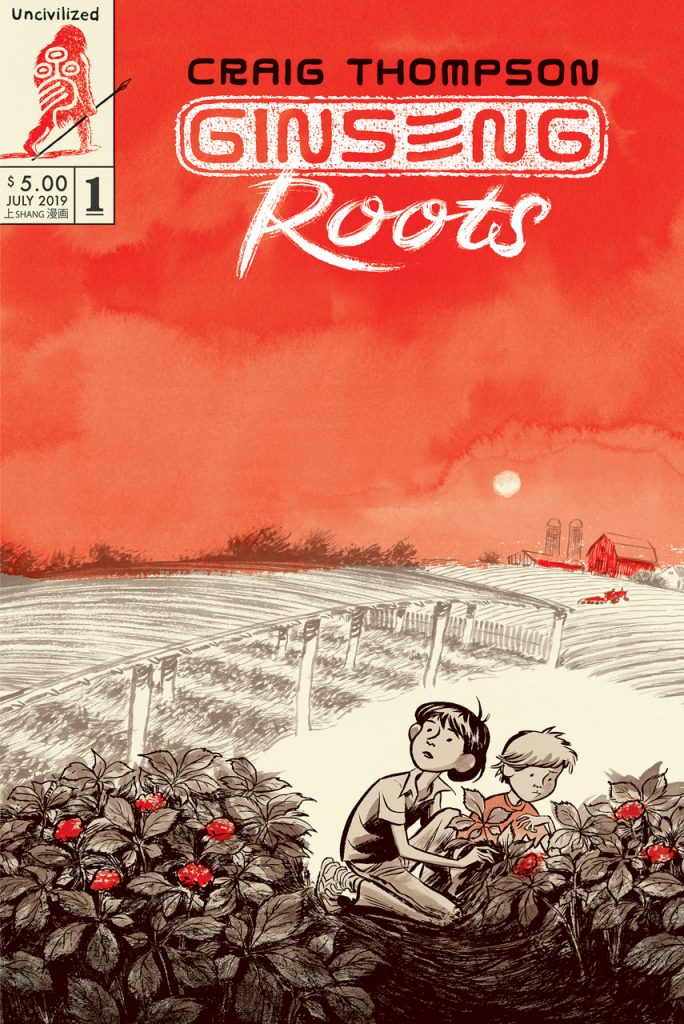
Craig Thompson has something of a reputation amongst indie comics readers, both good and bad. The first issue of his new serialized comic, Ginseng Roots, comes out this July, and his publisher Uncivilized Books sent a review copy earlier this month. Thompson’s last major literary work, Habibi, continues to leave a sour taste in many readers’ mouths. The book was raked across the coals for the way it exoticized middle-eastern culture and depicted rape, amongst many other things. Habibi was also praised for its beautiful illustration. Thompson’s work is heavily influenced by French cartoonist Blutch, and his comics have made a huge impression on North American audiences.
I think it’s important at this juncture to give you some insight into my relationship with Craig Thompson’s work. He’s a cartoonist I’ve been reading for over 15 years now, and one of my longest reader-author relationships (whatever that means). I’ve read the vast majority of his published output. That said, my experience with Thompson’s work is personally fraught. Blankets, his most recognized work, was one of the first small press comics I ever read, given to me by a friend in a college dorm room. I found that comic exhilarating at the time – it was beautiful, it was dramatic, and it showed me what comics could be outside of superhero tropes and manga. I was shocked and horrified by Habibi, a comic I couldn’t finish, and most recently I found his middle-grade adventure graphic novel Space Dumplins lovingly drawn, but mostly intolerable.
So it was with some trepidation that I approached this latest comic. With Ginseng Roots, Thompson goes back to creative nonfiction, telling the story of his childhood as a laborer in ginseng fields in Wisconsin as a child, and along the way delving into the American ginseng export market, his strictly conservative Christian upbringing, and his childhood relationship with his brother. The cover, with its blood red skyscape, beautiful ink drawing, and stylized title graphic, encapsulated everything I was excited for and worried about – that Thompson would deliver another beautiful comic that would be indelibly marred by his obliviousness.
After the cover, the first image is of Thompson and his brother sleeping in the same bed, waking up before dawn to go work in a ginseng field during summer vacation. It’s a stark black and white image, full of Thompson’s characteristic beautiful inking. The pacing of the first page is something of a joy, and that first page is worth dwelling on. As Thompson’s family moves through pastures, dodging cow patties, the sunrise breaks over the horizon, washing the top of an entire page spread in dense red. It’s a beautiful opening that belies the contents of the comic, which are both much more expansive in tone and subject.
One of the more endearing components of Ginseng Roots is Thompson’s fantastic use of this spot red. Whether it’s a touch on ginseng’s bright red berries, the roofs of chicken coops, or the Benday dot background texture used when Thompson discusses his childhood love of comics, the coloring of the comic is sublime. Thompson’s dark inky pages are a perfect match for this kind of limited palette. The whole of Ginseng Roots is both expressive and simultaneously subdued, a feat I’ve seen accomplished only rarely.
Something that wasn’t as compelling was Thompson’s use of calligraphy throughout the comic. Thompson first expressed his love of calligraphy with Habibi, and finds an outlet in Ginseng Roots to scratch that itch, showing readers various Chinese characters and defining them. Whether or not Thompson should be scratching that itch in public is another question; this same formulation is the introduction that led to many of the issues I had with Habibi. Thompson has a history of exoticising the “other,” and this feels like another dose of that, if only mildly. His lovely illustration would have been fine without these additions.
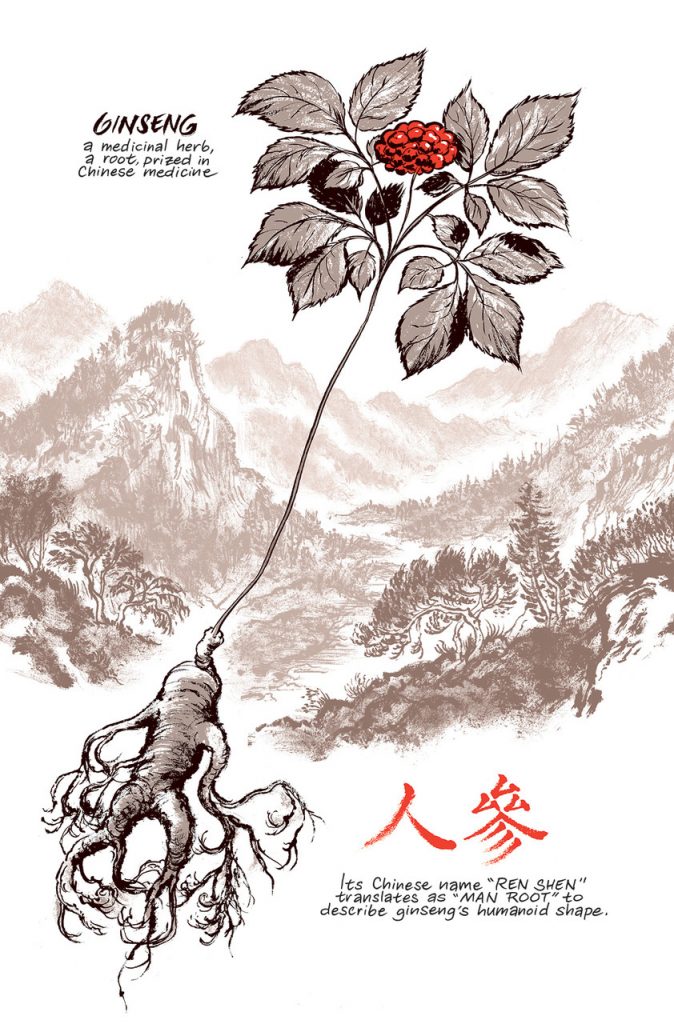
That said, the use of Chinese characters is heavily ingrained in the entire comic, and it drives the narrative of the latter half of the book. Thompson uses these Chinese characters as a way to draw the reader’s eye across the page, culminating with a series of pages where Thompson visits a wholesale store in Chinatown after identifying that the store sold ginseng. He walks in and starts pawing at the merchandise, reminiscing about his childhood as the store clerk meekly tells him, “No. Do not touch.” A better analogy for Thompson’s oblivious, self-centered philosophy does not exist. Perhaps this scene is a joke, but it’s in poor taste at best, and eyebrow-raisingly tone deaf considering previous criticism of his work. It makes me wonder; has Thompson has learned or grown as a person over the last 10 years?
I’m not sure I want the answer to that question.
Thompson spends much of the comic detailing the way that ginseng is grown, maintained, and harvested as a cash crop. He shows readers the way that ginseng is purchased by Asian wholesalers, how it is packaged and graded, and how it is sold to the end user, often as medicine. I found this fascinating in a “see how the sausage is made” kind of way. Thompson briefly touches on a ginseng “bubble” that burst in the mid-1990s, crashing the local economy. Thompson flees to the coast to become an artist, leaving his conservative Christian roots behind. But there’s a question of what is gone, and what was left that lingers over the entire work. It’s something that Thompson telegraphs will take focus in the second issue of the comic, due to be released in September 2019.
Craig’s brother Jon gives readers the final two pages, a clever idea that shows that he has been (at least nominally) consulted and has consented to this story. And while Jon’s comic is fine, I honestly just want to see Craig’s work. 32 pages is not a ton of space, and using up two pages for another creator’s work may be fine and dandy for this one issue, but it’s significant real estate that I was expecting Craig Thompson to fill.
Overall I think Ginseng Roots shows a lot of promise as a story; the intersection of global markets and personal experience is a fascinating exercise, and going back to his childhood stories is an area he has already shown facility in. Ginseng Roots doesn’t seem to have the melodramatic flair of Thompson’s earlier writing, probably for the better. And truly, Thompson’s beautiful art is a welcome embrace, a reminder of what he can do, given the opportunity. But I still don’t know that I can trust Thompson to tell this story without significant issues. I think readers who found Habibi intolerable may not give Thompson another chance, so this may be a moot point, but Ginseng Roots is not Habibi, although it shares its proclivities, if only in a slight way. I’m not sure that Thompson has grown as a creator since that time, and there is the biggest sticking point; whether or not Thompson has shown any personal growth will be key to whether or not Ginseng Roots can deliver over the entire course of its serialization. I’m interested, and hopeful, and I’m skeptical. Let’s see what happens with issue #2.
Sequential State is made possible in part by user subscriptions; you subscribe to the site on Patreon for as little as a dollar a month, and in return, you get additional content; it’s that simple. Your support helps pay cartoonists for illustration work, and helps keep Sequential State independent and ad-free. And if you’re not into monthly subscriptions, you can also now donate to the site on Ko-Fi.com. Thanks!

